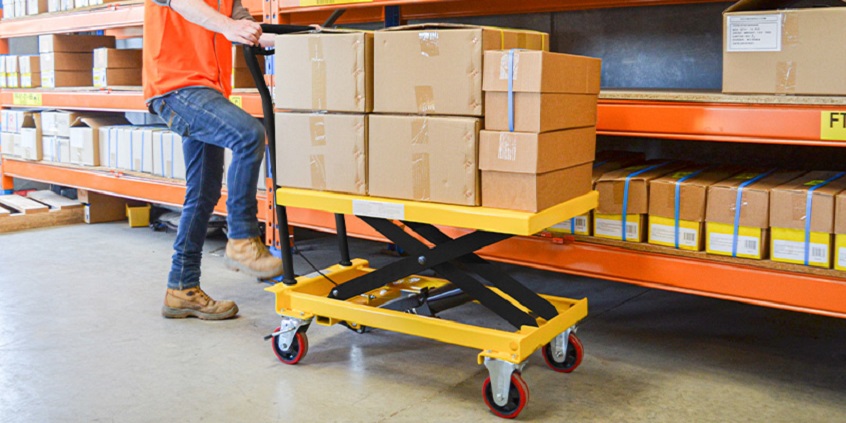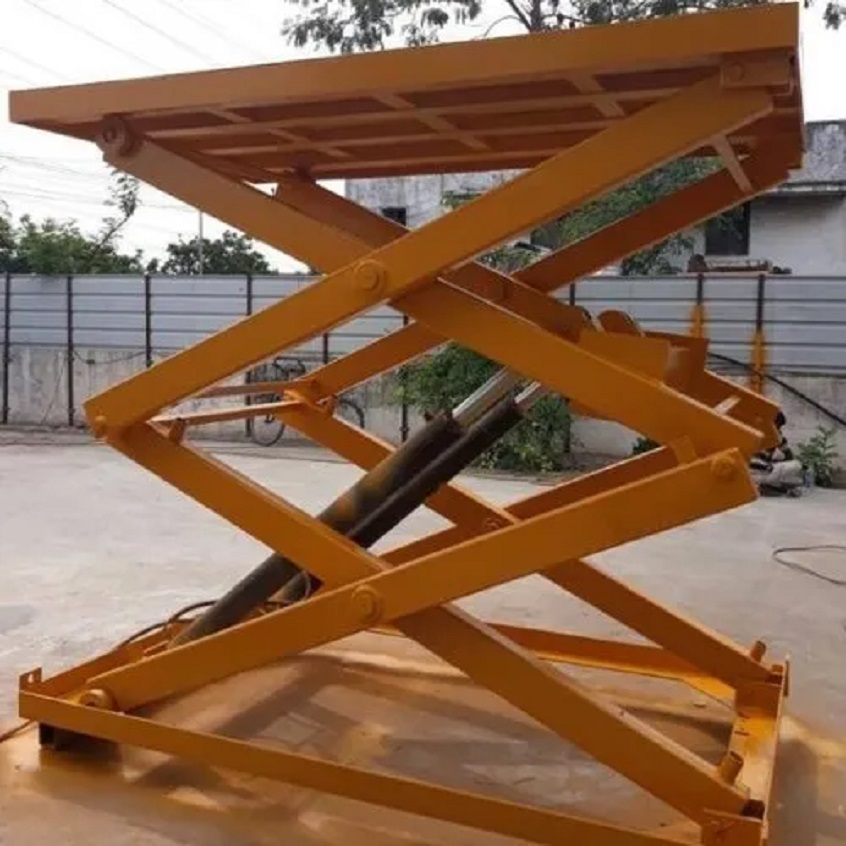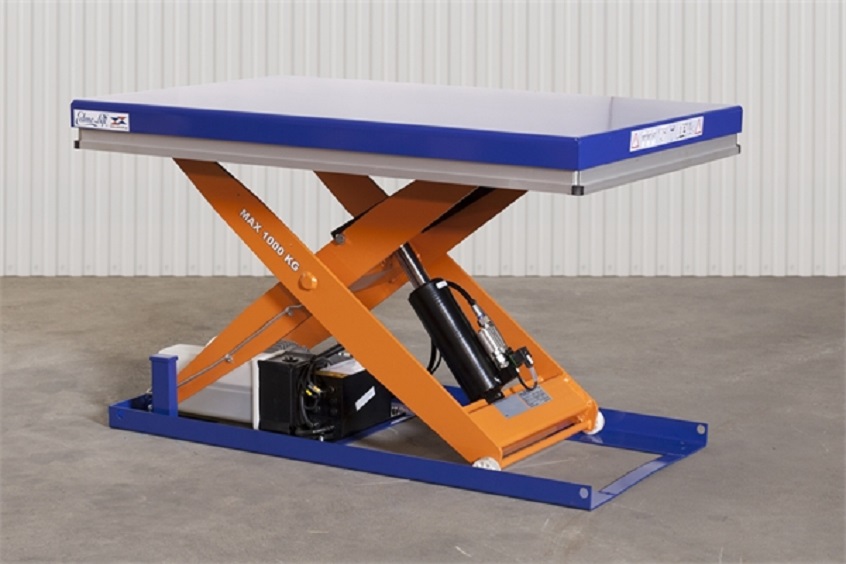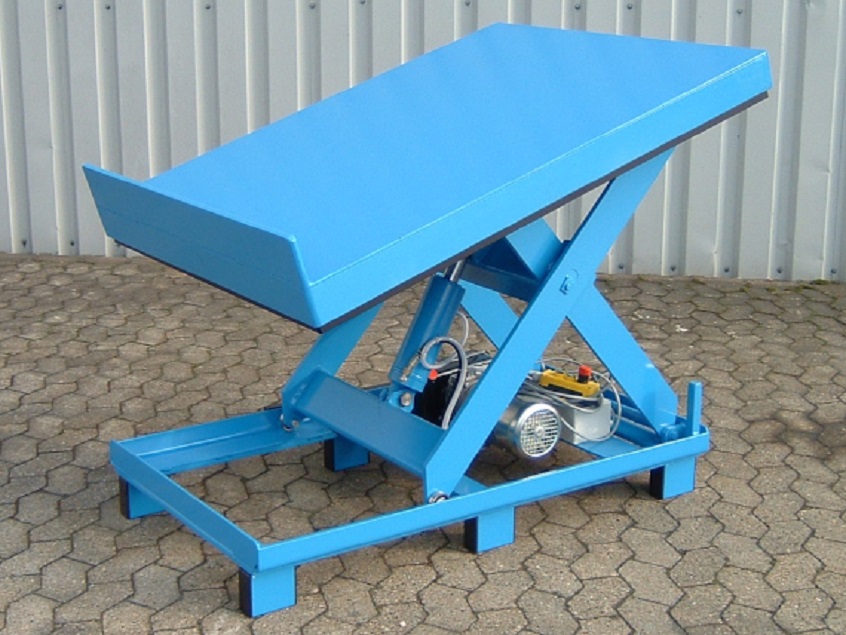
Handling Equipment 101: The Whats and Hows of Lift tables
Material handling encompasses a variety of equipment used in transporting, moving, lifting, lowering and storing different loads in different settings. This can be something as simple as a plastic trolley used in shops, to automated palletising machines found in large, fast-paced warehousing applications. A similar device used in warehouses, distribution centres, and manufacturing facilities is the lift table. It is particularly useful in lifting and lowering large loads, such as vehicles and heavy machinery, or helping employees access hard-to-reach places.
Contents
What are Lift Tables?
Lift tables are heavy-duty handling platforms that allow a variety of loads to be raised, lowered, or adjusted to any height. They can be used to lift loads weighing several kilos to those that exceed several tonnes. This is enabled by a simple design, consisting of a platform, a base, lifting legs, and a power source. Lift tables are easy to operate, allow for efficient workflow, and are safe and durable. This proves handy for a range of different uses and work environments.
Types of Lift Table
While the majority of lift tables consist of hydraulically driven scissors legs, there are different designs and types. They differ in their power source and lifting mechanism, how they work, and distinctive features tailored for a specific use or setting.
Lift Tables by Power Source

- Electric Lift Tables – These can be battery-powered, from a mains outlet, or both. They have an AC or DC motor, controllers with up, down, and emergency stop buttons, and high lifting capacities of up to 5 tonnes. Working an electric lift table is made easy with greater control, as operators can vary height with the touch of a button. They are also supplied with heavy-duty safety cylinders that hold the load in place in case of a power cut. And there are large stationary designs, used in places like workshops, or smaller mobile lift tables that allow for greater flexibility.
- Hydraulic Lift Tables – Hydraulic fluid is forced under high pressure into a cylinder to exert force on the legs and lift the platform. These are the most common type and are found in many work settings.
- Pneumatic Tables – These work with compressed air and a cylinder to lift or lower the platform. They are cleaner alternatives, albeit with lower lifting capacity, and suited to areas like cleanrooms, hospitals, and food and beverage facilities.
- Manual Lift Tables – This is the most basic design, relying on a crank, ratchet, screw, or pump. The operator engages the lifting mechanism either by hand or by a foot pedal. Manual variants are inexpensive and good for lifting lighter loads.
Lift Tables by Design

The majority of lift tables are of the scissor lift type. They rely on scissor-shaped legs to lift and lower the platform. There are different types, with single scissor lifts being the most common. These can handle very large and heavy loads. Other designs working in a similar way are screw-drive and belt-drive lift tables. And each can be optioned with a power source that suits the application.
There’s more functionality and reliability in rack-and-pinion lift tables, functioning essentially like heavy-duty jacks. These can lift and lower exceptionally large loads, some over 5 tonnes, making them heavy-duty options preferred in industrial settings. For lighter loads, and those that require precision, look to articulated lift tables. These have a two-part lower and upper lifting mechanism supporting a plate or heavier platform.
Lift Tables by Features

Lift tables can also be categorised by their specific features and how they work. A standard electric lift table for instance uses an electric motor, can be lowered quite low to load heavy items and objects, and can raise loads to 1500mm or more. Most are of the stationary type. Rotating lift tables have a 360-degree rotating turntable and are useful where the operator needs easy access to multiple sides of the load. Similarly, lift-and-tilt tables can tilt heavy loads at varying angles, making them useful in processes like parts assembly and equipment repairs.
Lifting loads higher is done with a double or triple lift table, in areas like warehouses. These have two or three sets of tables stacked on top of each other. Conversely, low-profile lift tables have a lower loading height, around 100mm, and are useful in lifting and lowering pallets.
Benefits of Lift Tables
Lift tables are one of the most sought-after pieces of material handling equipment involved in heavy and repetitive lifting tasks. They have quite a few advantages:
- Increased workplace safety – Lift tables protect employees from injuries, and prevent the risk of accidents and damage.
- Stability and durability – Plates and platforms provide a stable base for any type of load, irrelevant of weight or height. All parts are meant to last and need little maintenance.
- Height adjustability – Lift tables can be optioned in different lifting heights. Moreover, many prevent accidents even in power cuts, by keeping the load in place.
- Different load capacities – There are tables able to lift a variety of loads, and in varying weights, from a few kilos, to over several tonnes.
- Reliable and easy to use – A lift table provides years of reliable use, considerably speeds up workflow, and requires little operator training.
What to Look for
If you’re considering a lift table for your business, there are a few questions you’ll want answered. First, is the type of load and how the lift table will be used. This assumes that you’ll be aware of the platform size in terms of overall length and width, the weight of the load, how that weight is distributed on the platform, the height the loads will be lifted, and whether there’s the need for any attachments or materials in securing and lifting different types of loads.
Next is where the lift table is used. There are larger stationary tables that take up quite a bit of floor space and portable options that can be easily moved around. Moreover, the setting will determine variables like the power supply and what can safely be operated in specific conditions. In addition, operating ease will mean more safety and faster workflow. Variants with simple push buttons and control panels might be more expensive but have unrivalled safety and functionality. The same goes for lift tables used to lift and lower employees, so necessities like handrails and gates are more than required.
What you ultimately choose will be the right balance of functionality, durability, features, and safety, and appropriate for the load and the working environment.

